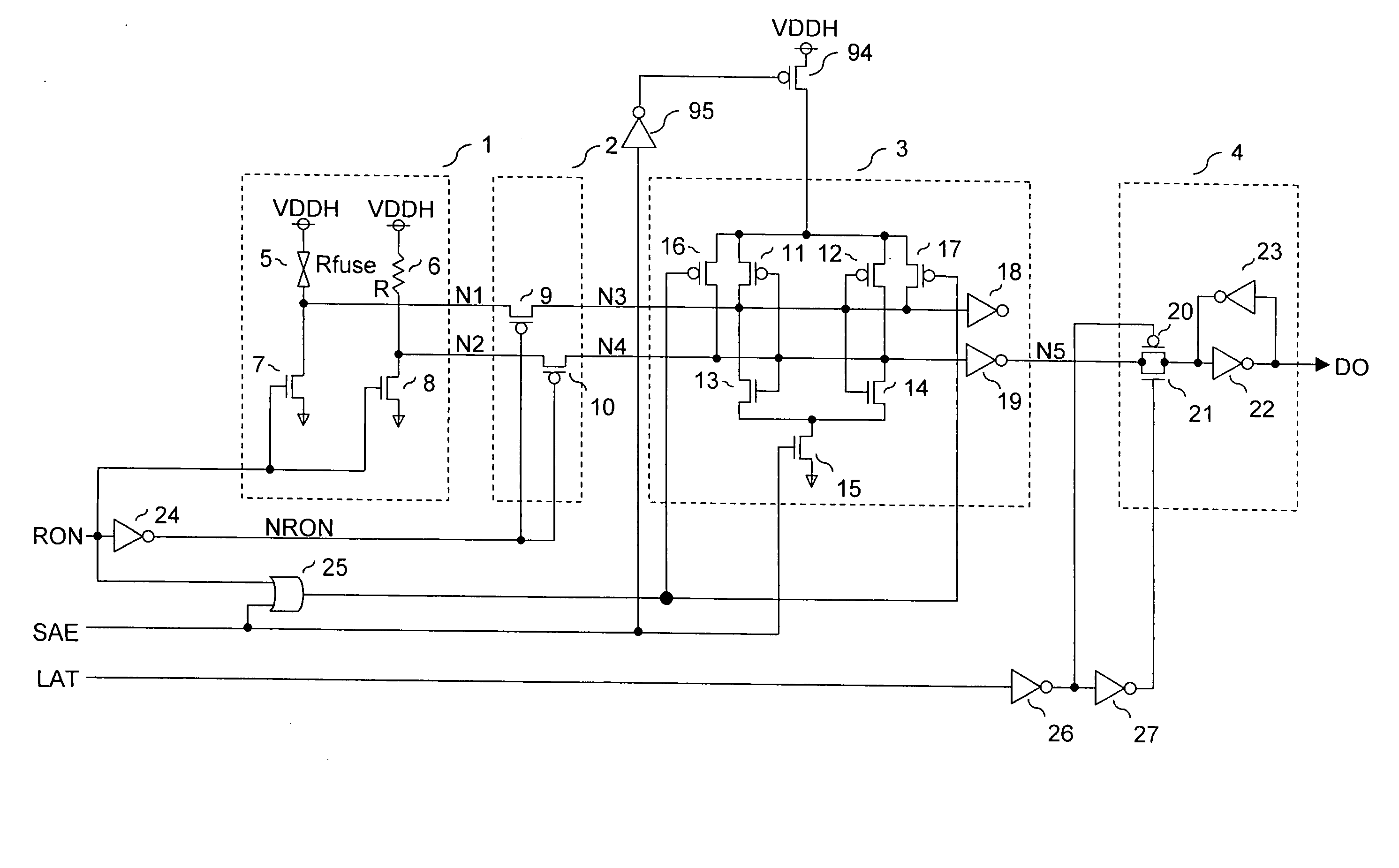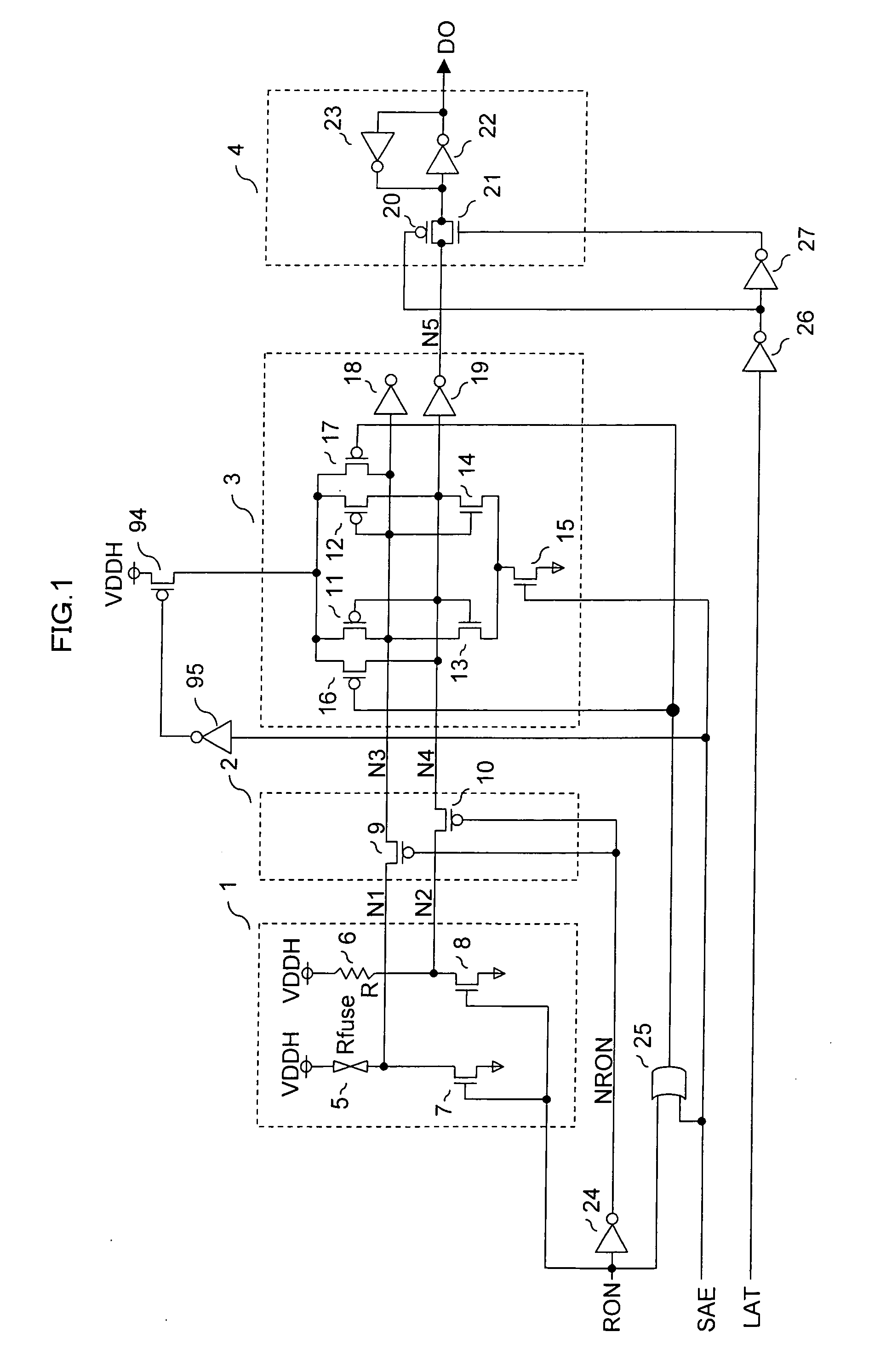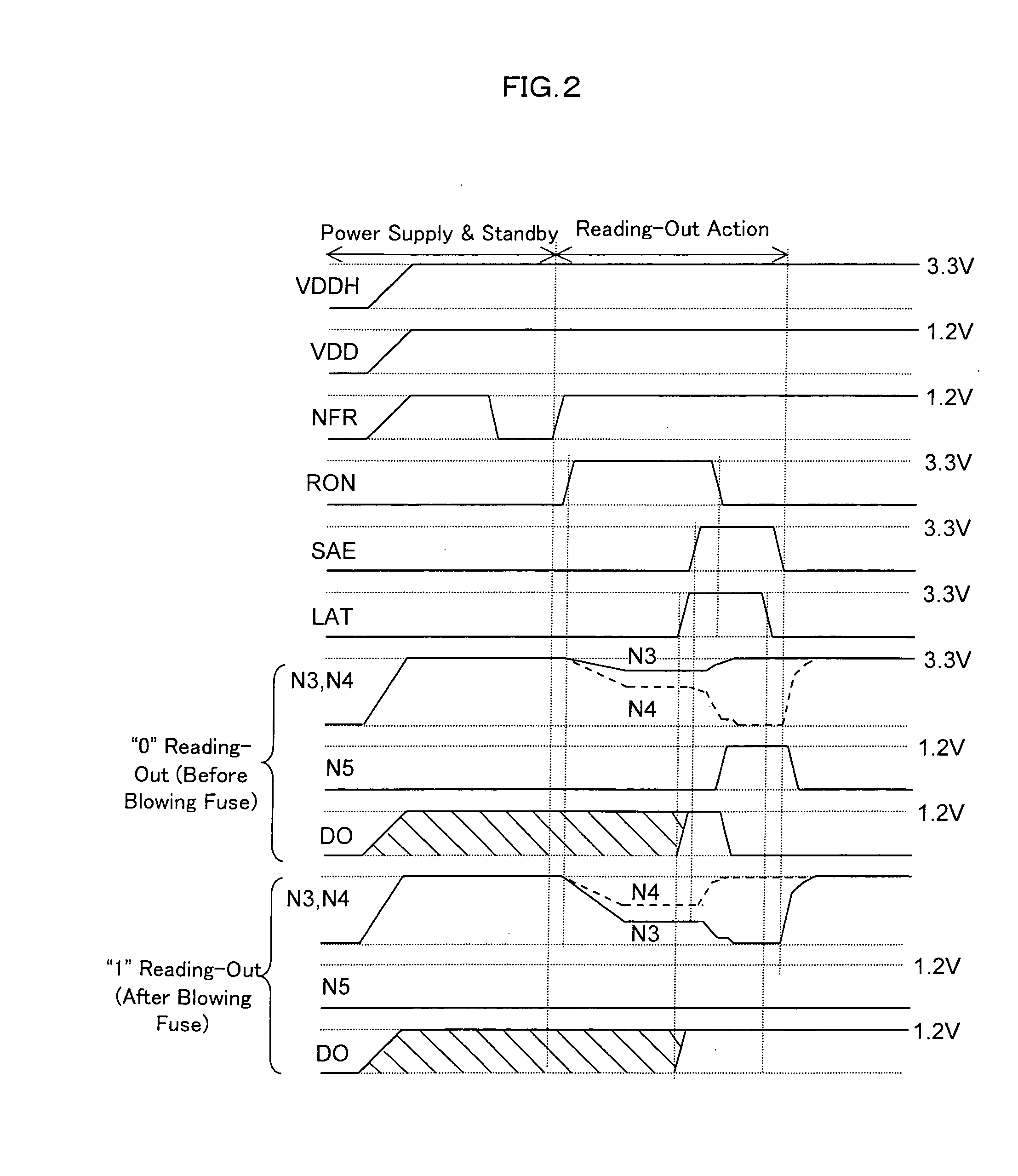Semiconductor memory
a technology of semiconductors and memory, applied in the field of semiconductor memory, can solve the problems of generating reading out failure, mis-latching data, and increasing the difficulty of fuses, and achieve the effect of improving the resistance of factors and improving reliability
- Summary
- Abstract
- Description
- Claims
- Application Information
AI Technical Summary
Benefits of technology
Problems solved by technology
Method used
Image
Examples
first embodiment
[0044] (First Embodiment)
[0045]FIG. 1 shows an example of a semiconductor memory which comprises an electric fuse. In FIG. 1, reference numeral 1 is a voltage converting circuit. 2 is a switch circuit. 3 is a voltage comparing circuit. 4 is a latch circuit. RON is a control signal formed with a one-shot pulse, which controls the voltage converting circuit 1, the switch circuit 2, and the voltage comparing circuit 3. SAE is a control signal formed with a one-shot pulse, which controls the voltage comparing circuit 3. LAT is a control signal formed with a one-shot pulse, which controls the latch circuit 4.
[0046] The voltage converting circuit 1 comprises an electric fuse (a first resistance element) 5, a reference resistance (a second resistance element) 6, and NMOS transistors (NMOS switches) 7, 8. One end each of both the electric fuse 5 and the reference resistance 6 is connected to a power source VDD and the other end thereof is connected to GND (ground potential) through the NMO...
modification example
[0082] (Modification Example of the First Embodiment)
[0083] In the voltage converting circuit 1, the voltage difference between both outputs N1, N2 of the voltage converting circuit 1 is controlled by the driving capacity of the NMOS transistors 7, 8 of the voltage converting circuit 1. However, the device size of the NMOS transistors 7, 8 needs to be designed such that it enables to maintain the voltage margin for the dispersions of Vt (threshold voltage) of the MOS transistors in the voltage comparing circuit 3 and the voltage margin for the noise, etc. even under the worst condition for the reading-out action.
[0084] During a normal operation, the voltage of as high as about 3.6 V is applied to the NMOS transistors 7 and 8 of the voltage converting circuit 1. However, in a reliability test, still higher voltage (as high as about 4.1 V) is applied. That is, at the time of conducting the reliability test, there is a greater electric current than the normal operation to be flown in ...
second embodiment
[0091] (Second Embodiment)
[0092] In the case where the latch gate of the first embodiment (FIG. 1) is constituted of a MOS transistor with a thin gate oxide film, the voltage level of the control signal becomes as follows. That is, the control signals RON, SAE have the voltage level which is boosted from the VDD to the VDDH according to the external input signal NFR (VDD level), whereas the control signal LAT becomes the voltage level of the VDD. However, under such voltage properties, if the voltage converting circuit 1 and the voltage comparing circuit 3 are controlled by the control signal RON, SAE of the VDDH level and the latch circuit 4 is controlled by the control signal LAT of the VDD level, there may cause a following inconvenience. Specifically, when the VDD is the low voltage and the VDDH is the high voltage, there may be a timing skew generated between the control signals RON, SAE of the VDDH level and the control signal LAT of the VDD level. Such timing skew will be des...
PUM
 Login to View More
Login to View More Abstract
Description
Claims
Application Information
 Login to View More
Login to View More - R&D
- Intellectual Property
- Life Sciences
- Materials
- Tech Scout
- Unparalleled Data Quality
- Higher Quality Content
- 60% Fewer Hallucinations
Browse by: Latest US Patents, China's latest patents, Technical Efficacy Thesaurus, Application Domain, Technology Topic, Popular Technical Reports.
© 2025 PatSnap. All rights reserved.Legal|Privacy policy|Modern Slavery Act Transparency Statement|Sitemap|About US| Contact US: help@patsnap.com



